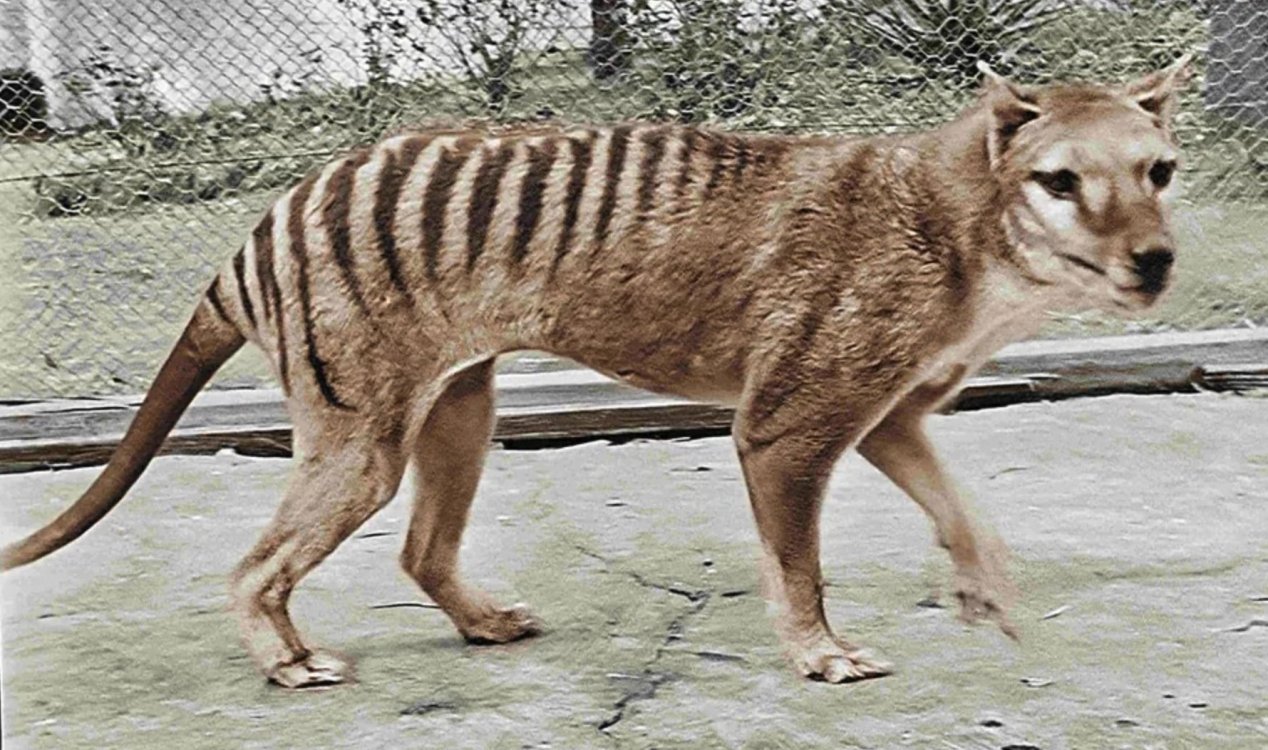Nature & Environment
November 13, 2023 · 0 comments
0 comments

Image Credit: Samuel Francois-Steininger / Composite Films / National Film and Sound Archive
The exact circumstances surrounding its demise had recently been called into question following a paper published by scientists Robert Paddle and Kathryn Medlock who maintained that the thylacine seen in widely distributed footage from the time was not actually the last and that it was a second, female Tasmanian tiger that had died at Hobart Zoo on September 7th, 1936.
There has also been a rumor suggesting that the last thylacine had died of neglect after being locked out of its den on a particular cold night.
Both of these claims have since been disputed in another new paper by researchers Gareth Linnard and Stephen Sleightholme who maintain that there is no evidence to suggest that the last thylacine died of neglect, while the second, female specimen had died long before 1936.
"Examining the argument offered by Paddle and Medlock revealed instances where the evidence was presented in an incomplete form, did not support the statements made, or was presented out of context," they wrote. "Further, the evidence cited was limited and failed to take into account multiple additional contradictory sources."
Their findings indicated that two thylacines had been caught by the Delphin family in Tasmania in 1930, but that only one of them survived and was subsequently sold to Hobart Zoo.
The zoo would have also considered the animal to be extremely valuable at the time, making it very unlikely that it would have neglected to look after it properly.
"It was most certainly not the casually disregarded animal of popular modern myth. Instead, it was the most valuable animal at the zoo," said Linnard.
"When it died, a replacement was immediately sought for 30 pounds, then 40 pounds the following year. In context, the latter sum is 49 per cent of the entire amount spent on animal purchases between May 1934 and the closure of the zoo in late 1937."
Source: abc.net.au | Comments (0)
New research dispels myths about the last captive thylacine
By T.K. RandallNovember 13, 2023 ·
 0 comments
0 comments
Image Credit: Samuel Francois-Steininger / Composite Films / National Film and Sound Archive
New claims had come to light in recent years implying that there were two thylacines at the zoo and that the last one had died of neglect.
There are few extinct species as widely debated as the thylacine (or Tasmanian tiger) - a type of carnivorous marsupial that died out after the last known specimen passed away in captivity back in 1936.The exact circumstances surrounding its demise had recently been called into question following a paper published by scientists Robert Paddle and Kathryn Medlock who maintained that the thylacine seen in widely distributed footage from the time was not actually the last and that it was a second, female Tasmanian tiger that had died at Hobart Zoo on September 7th, 1936.
There has also been a rumor suggesting that the last thylacine had died of neglect after being locked out of its den on a particular cold night.
Both of these claims have since been disputed in another new paper by researchers Gareth Linnard and Stephen Sleightholme who maintain that there is no evidence to suggest that the last thylacine died of neglect, while the second, female specimen had died long before 1936.
Their findings indicated that two thylacines had been caught by the Delphin family in Tasmania in 1930, but that only one of them survived and was subsequently sold to Hobart Zoo.
The zoo would have also considered the animal to be extremely valuable at the time, making it very unlikely that it would have neglected to look after it properly.
"It was most certainly not the casually disregarded animal of popular modern myth. Instead, it was the most valuable animal at the zoo," said Linnard.
"When it died, a replacement was immediately sought for 30 pounds, then 40 pounds the following year. In context, the latter sum is 49 per cent of the entire amount spent on animal purchases between May 1934 and the closure of the zoo in late 1937."
Source: abc.net.au | Comments (0)

The Unexplained Mysteries
Book of Weird News
AVAILABLE NOW
Take a walk on the weird side with this compilation of some of the weirdest stories ever to grace the pages of a newspaper.
Click here to learn more

Support us on Patreon
BONUS CONTENTFor less than the cost of a cup of coffee, you can gain access to a wide range of exclusive perks including our popular 'Lost Ghost Stories' series.
Click here to learn more
Ancient Mysteries and Alternative History
UK and Europe
Metaphysics and Psychic Phenomena
Russia and the War in Ukraine
Total Posts: 7,767,962 Topics: 325,006 Members: 203,756
Not a member yet ? Click here to join - registration is free and only takes a moment!
Not a member yet ? Click here to join - registration is free and only takes a moment!


































Please Login or Register to post a comment.